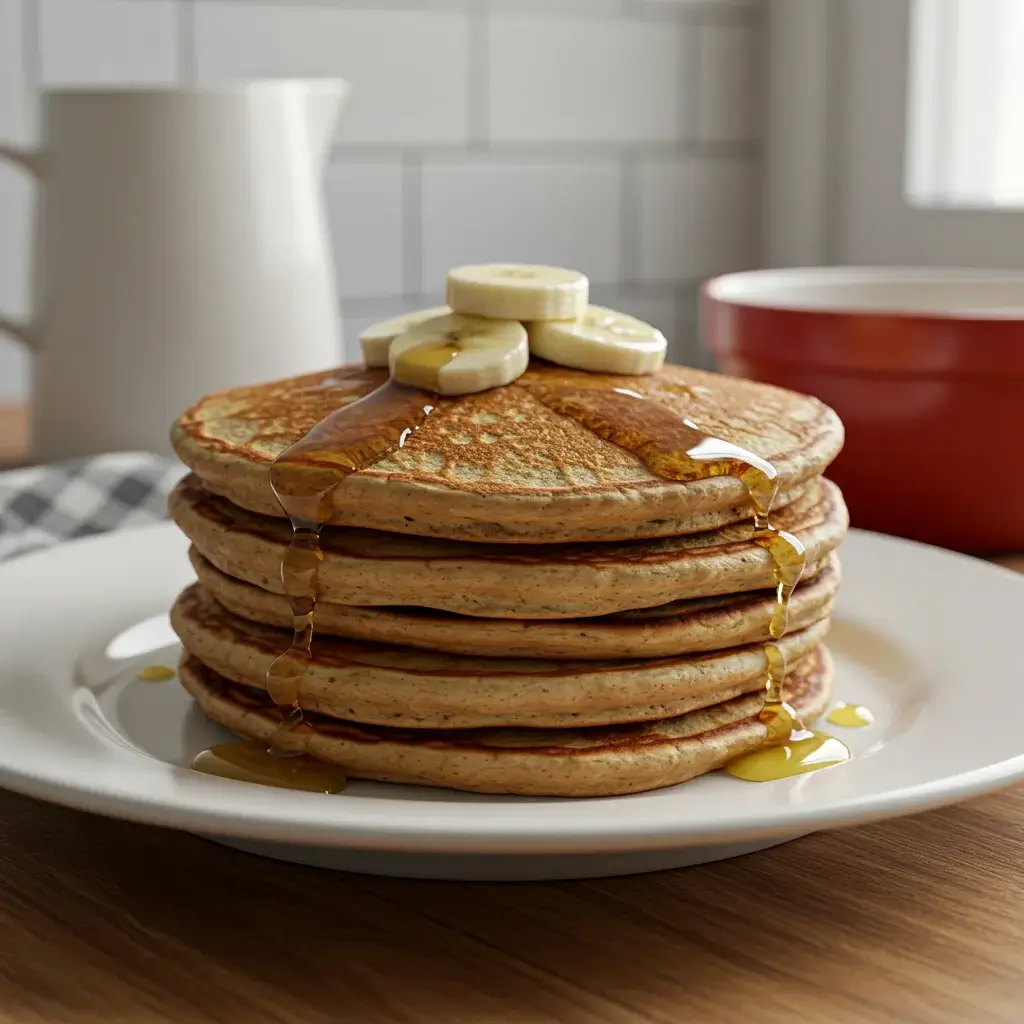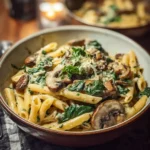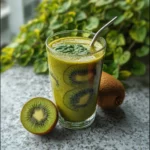Gluten-free pancakes are a fantastic way to start your day, offering a delicious and healthy alternative to traditional pancakes. Whether you have celiac disease, gluten intolerance, or simply want to try something new, gluten-free pancakes are a versatile and tasty option. In this article, we will guide you through the process of making the perfect gluten-free pancakes, providing you with all the necessary information you need.
Ingredients
To make the best gluten-free pancakes, you will need the following ingredients:
- 1 cup gluten-free flour blend (ensure it’s a mix that can be substituted 1:1 with regular flour)
- 1 tablespoon sugar (or your preferred sweetener)
- 1 teaspoon baking powder
- 1/2 teaspoon baking soda
- 1/4 teaspoon salt
- 1 cup buttermilk (or a dairy-free alternative like almond milk with a splash of lemon juice)
- 2 large eggs
- 2 tablespoons melted butter (or coconut oil for a dairy-free version)
- 1 teaspoon vanilla extract
- Optional: 1/2 teaspoon cinnamon (for added flavor)
Instructions
Making gluten-free pancakes is straightforward and rewarding. Follow these simple steps for the perfect batch:
- Mix Dry Ingredients: In a large bowl, whisk together the gluten-free flour blend, sugar, baking powder, baking soda, salt, and optional cinnamon.
- Prepare Wet Ingredients: In a separate bowl, combine the buttermilk, eggs, melted butter, and vanilla extract. Whisk until well combined.
- Combine Mixtures: Pour the wet ingredients into the dry ingredients. Gently stir until just combined. Be careful not to overmix; a few lumps are okay.
- Rest the Batter: Allow the batter to rest for about 5-10 minutes. This helps the flour hydrate and creates fluffier pancakes.
- Heat the Griddle: Preheat a non-stick skillet or griddle over medium heat. Lightly grease with butter or oil if necessary.
- Cook the Pancakes: Pour 1/4 cup of batter onto the griddle for each pancake. Cook until bubbles form on the surface and the edges look set, about 2-3 minutes. Flip and cook for another 2-3 minutes on the other side until golden brown.
- Serve Warm: Transfer the pancakes to a plate and cover loosely with foil to keep warm. Repeat with the remaining batter, greasing the skillet as needed.
Nutrition Facts
Here is a breakdown of the nutritional content for a serving size of two gluten-free pancakes (approximately):
- Calories: 210
- Protein: 6g
- Carbohydrates: 34g
- Dietary Fiber: 2g
- Sugars: 5g
- Fat: 7g
- Saturated Fat: 3g
- Cholesterol: 75mg
- Sodium: 380mg
Note: Nutrition facts will vary based on the specific ingredients and brands used.
How to Serve
Gluten-free pancakes are not only a delightful breakfast option but also a canvas for your culinary creativity. Their versatility allows you to cater to various taste preferences and dietary needs. Here are some comprehensive serving suggestions that will elevate your pancake experience:
Classic Style
For those who appreciate the timeless appeal of pancakes, serving them with traditional toppings is a must. A generous pat of butter melting into the warm pancakes, complemented by a drizzle of pure maple syrup, creates a comforting and satisfying breakfast. To enhance this classic presentation, consider adding a dusting of powdered sugar for a touch of sweetness and visual appeal. You can also experiment with flavored syrups, such as blueberry or caramel, to give a unique twist to this beloved combination.
Fruity Delight
Fresh fruits not only add a pop of color but also bring natural sweetness and nutrition to your gluten-free pancakes. Top your pancakes with an array of fresh berries—such as plump blueberries, ripe strawberries, or juicy raspberries—each offering distinct flavors and textures. For a tropical twist, try slices of banana or even diced mango. You can also create a fruit compote by simmering your favorite fruits with a bit of sugar and lemon juice, then spooning it over warm pancakes. This not only enhances the pancake’s flavor profile but also adds a homemade touch.
Nutty Flavor
For those who enjoy a bit of crunch, incorporating nuts into your pancake serving is a fantastic idea. Sprinkle the pancakes with chopped nuts, such as toasted almonds, walnuts, or pecans, right before serving to maintain their crispness. You might also consider making a nut butter spread—like almond or peanut butter— to slather on top of your pancakes. This adds a creamy texture and rich flavor that pairs beautifully with the fluffy pancakes. Additionally, you could prepare a nut-and-seed granola to sprinkle on top, adding both crunch and a nutritional boost.
Whipped Cream and Chocolate Chips
If you’re in the mood for an indulgent breakfast or a sweet treat, consider topping your gluten-free pancakes with whipped cream and chocolate chips. Start by whipping fresh cream until it reaches soft peaks, and then dollop it generously on top of the pancakes. For the chocolate lovers, sprinkle mini chocolate chips for an extra layer of sweetness. You can even melt some chocolate to drizzle over the top, creating a decadent dessert-like experience. To add depth, consider infusing your whipped cream with flavors like vanilla extract or cocoa powder.
Savory Twist
For those who prefer a savory brunch experience, gluten-free pancakes can easily transition from sweet to savory with a few thoughtful additions. Serve your pancakes with a dollop of Greek yogurt or sour cream, which adds creaminess and tanginess. To elevate the savory aspect, sprinkle your pancakes with fresh herbs such as chives, dill, or parsley. You can also consider adding toppings like sautéed mushrooms or spinach, which complement the pancake’s texture and flavor. A poached or fried egg on top can transform your pancakes into a hearty meal, perfect for brunch gatherings.
Creative Combinations
Don’t hesitate to mix and match these serving ideas for a unique pancake experience. For instance, you could create a fruity and nutty pancake by topping pancakes with fresh berries and a sprinkle of nuts. Alternatively, consider a savory-sweet combo by adding a smear of nut butter and a drizzle of honey alongside a sprinkle of herbs. The possibilities are endless, and exploring different flavor profiles can make your gluten-free pancake experience truly special.
Conclusion
By serving gluten-free pancakes in various delicious ways, you can cater to different tastes and occasions. Whether you prefer classic toppings or adventurous combinations, each serving suggestion enhances the overall experience, making gluten-free pancakes a delightful addition to any meal. Feel free to experiment and find your own favorite way to enjoy these versatile pancakes!
Additional Tips
Creating the perfect gluten-free pancakes requires careful attention to detail and a few essential tips. These guidelines will help you achieve a light, fluffy, and delicious result that everyone can enjoy, regardless of dietary restrictions.
Choose the Right Flour
When it comes to gluten-free baking, the choice of flour is crucial. Not all gluten-free flour blends perform the same way, so it’s important to select a blend tailored for pancakes. Look for options that include a mix of different flours, such as brown rice flour, almond flour, or oat flour, combined with starches like tapioca or potato starch. Additionally, ensure that your chosen blend contains xanthan gum or guar gum. These ingredients act as binders, mimicking the elasticity and structure gluten provides in traditional pancakes. If you’re using a flour blend that does not contain these gums, you may need to add about 1/4 teaspoon of xanthan gum per cup of flour to achieve the desired texture.
Check Consistency
The consistency of your pancake batter is another critical factor in achieving the right texture. Ideally, the batter should be thick but still pourable, resembling a slightly runny cake batter. If you find that your batter is too thick and difficult to pour, don’t hesitate to adjust it by adding a splash of milk—dairy or non-dairy—until you reach the desired consistency. Conversely, if the batter seems too thin, simply add a bit more flour until it thickens up. Remember that the batter will thicken as it sits due to the absorption properties of gluten-free flours, so it’s best to cook it soon after mixing.
Avoid Overmixing
Mixing the batter just enough is key to preventing tough pancakes. Gluten-free flours lack the protein structure that gives traditional pancakes their fluffiness, so overmixing can lead to a rubbery texture. Stir your ingredients gently until just combined; a few lumps are perfectly acceptable. This ensures that the wet and dry ingredients are incorporated without overworking the batter. If you notice some pockets of flour, simply fold them in gently with a spatula.
Use Fresh Ingredients
The freshness of your baking powder and baking soda plays a significant role in the rise and fluffiness of your pancakes. Outdated leavening agents can lead to flat, dense pancakes. Before you start cooking, check the expiration dates on your baking powder and baking soda. A simple test for baking powder freshness is to mix a teaspoon with hot water—if it bubbles vigorously, it’s still good to use. For baking soda, mix it with a splash of vinegar; if it fizzes, it’s effective. Fresh ingredients will ensure that your pancakes rise beautifully and have a light texture.
Keep Warm
As you cook multiple batches of pancakes, the first few may cool down before serving. To keep your pancakes warm without drying them out, place them on a baking sheet lined with parchment paper and cover them loosely with aluminum foil. Keep the baking sheet in a low oven set to around 200°F (93°C). This will maintain their temperature and keep them soft and fluffy until you’re ready to serve. Just be careful not to leave them in the oven for too long, as prolonged heat can lead to drying.
Experiment with Add-ins
While the classic pancake is always a favorite, don’t hesitate to experiment with add-ins to enhance your gluten-free pancakes. Consider folding in ingredients like fresh blueberries, sliced bananas, or chocolate chips for added flavor. You can also incorporate spices such as cinnamon or nutmeg to give your pancakes a warm, aromatic touch. If you want to boost the nutritional value, consider adding ground flaxseed or chia seeds, which also provide a slight nutty flavor.
Top it Off Right
Finally, consider the toppings. Maple syrup is a classic choice, but don’t shy away from other options like yogurt, fresh fruits, nut butters, or a sprinkle of powdered sugar. For a gourmet touch, try a drizzle of honey or homemade fruit compote. The right toppings can elevate your gluten-free pancakes from a simple breakfast to a delightful brunch dish.
By following these tips, you’ll not only create gluten-free pancakes that are delicious but also have the perfect texture and flavor. Happy cooking!
FAQs
Q: Can I make the batter ahead of time?
A: It’s best to prepare the batter just before cooking, but you can refrigerate it for up to 24 hours. Stir before using.
Q: Can I freeze gluten-free pancakes?
A: Yes, allow them to cool completely, then layer with parchment paper and place in a freezer-safe container. Reheat in the toaster or oven.
Q: What if I don’t have buttermilk?
A: Make your own by adding 1 tablespoon of lemon juice or vinegar to 1 cup of milk. Let it sit for 5 minutes before using.
Q: Are these pancakes dairy-free?
A: They can be made dairy-free by using a dairy-free milk alternative and coconut oil instead of butter.
Q: How do I know when to flip the pancakes?
A: Flip when bubbles form on the surface and the edges look set. The underside should be golden brown.
Conclusion
Gluten-free pancakes offer a delicious and healthy option for breakfast enthusiasts looking to enjoy the flavors of traditional pancakes without the gluten. With the right ingredients and a few simple steps, you can whip up a batch of fluffy, flavorful pancakes that will delight your taste buds. The key to achieving the perfect texture lies in using a blend of gluten-free flours, such as almond or rice flour, which create a light, airy batter. Whether you serve them with classic maple syrup or get creative with toppings like fresh berries, whipped cream, or even a drizzle of honey, gluten-free pancakes are sure to become a favorite in your breakfast rotation. For an extra nutritional boost, consider adding chia seeds or flaxseed meal to the batter. These pancakes are not only a treat for those with gluten sensitivities, but also for anyone seeking a wholesome breakfast. Enjoy these delightful pancakes with family and friends and start your day on a delicious note!
Print
Gluten-Free Pancakes Recipe
Ingredients
-
- 1 cup gluten-free flour blend (ensure it’s a mix that can be substituted 1:1 with regular flour)
-
- 1 tablespoon sugar (or your preferred sweetener)
-
- 1 teaspoon baking powder
-
- 1/2 teaspoon baking soda
-
- 1/4 teaspoon salt
-
- 1 cup buttermilk (or a dairy-free alternative like almond milk with a splash of lemon juice)
-
- 2 large eggs
-
- 2 tablespoons melted butter (or coconut oil for a dairy-free version)
-
- 1 teaspoon vanilla extract
-
- Optional: 1/2 teaspoon cinnamon (for added flavor)
Instructions
-
- Mix Dry Ingredients: In a large bowl, whisk together the gluten-free flour blend, sugar, baking powder, baking soda, salt, and optional cinnamon.
-
- Prepare Wet Ingredients: In a separate bowl, combine the buttermilk, eggs, melted butter, and vanilla extract. Whisk until well combined.
-
- Combine Mixtures: Pour the wet ingredients into the dry ingredients. Gently stir until just combined. Be careful not to overmix; a few lumps are okay.
-
- Rest the Batter: Allow the batter to rest for about 5-10 minutes. This helps the flour hydrate and creates fluffier pancakes.
-
- Heat the Griddle: Preheat a non-stick skillet or griddle over medium heat. Lightly grease with butter or oil if necessary.
-
- Cook the Pancakes: Pour 1/4 cup of batter onto the griddle for each pancake. Cook until bubbles form on the surface and the edges look set, about 2-3 minutes. Flip and cook for another 2-3 minutes on the other side until golden brown.
-
- Serve Warm: Transfer the pancakes to a plate and cover loosely with foil to keep warm. Repeat with the remaining batter, greasing the skillet as needed
Nutrition
- Serving Size: one normal portion
- Calories: 210
- Sugar: 5g
- Sodium: 380mg
- Fat: 7g
- Saturated Fat: 3g
- Carbohydrates: 34g
- Fiber: 2g
- Protein: 6g
- Cholesterol: 75mg





